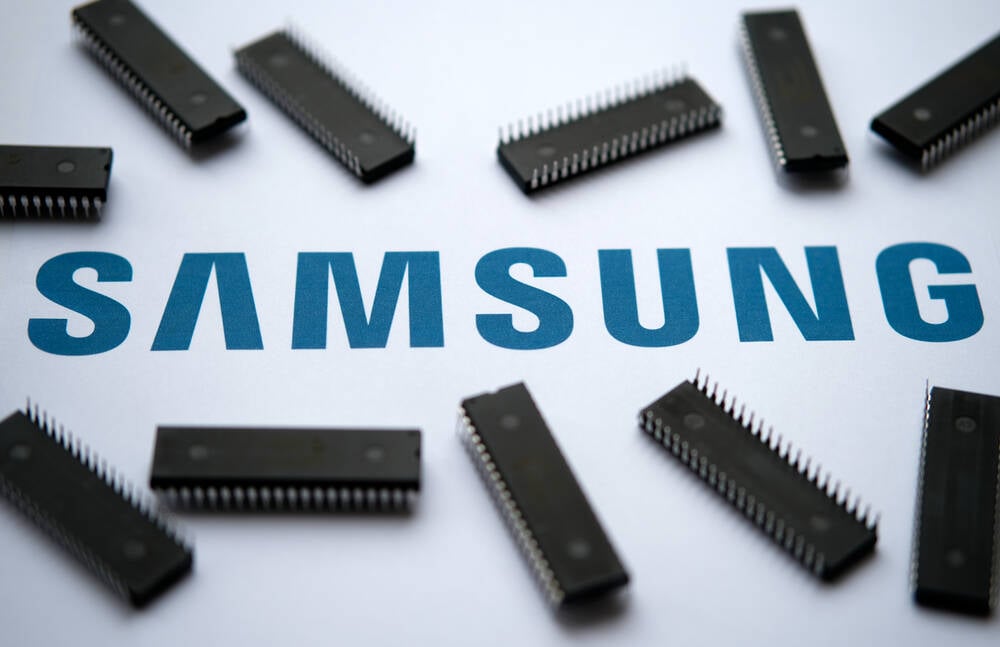Samsung Blames 'one-off Costs' As Q3 Chip Profits Plummet 40%

Samsung Electronics is blaming a quarter-on-quarter plunge in operating profits in its chips division on costs incurred, and says it intends to focus on "high value-added products" for the rest of 2024.
The Device Solutions (DS) Division, which covers semiconductors and displays, recorded revenue of ₩29.27 trillion (about $21 billion), an impressive rise of 78 percent compared with the same period last year - when the chip market doldrums were apparent. On a sequential basis, that revenue growth was up just three percent.
In terms of operating profit, Samsung's DS unit swung from an operating loss of ₩3.75 trillion ($2.72 billion) in Q3 2023 to ₩3.86 trillion profit ($2.8 billion). Yet the picture was - again - less positive compared to the previous quarter, down 40 percent from the ₩6.45 trillion ($4.7 billion) Samsung logged in Q2 2024.
Things are still not running entirely smoothly for this part of the organization. Just this month, Samsung was forced to deny that it was planning to spin off its foundry business or chip design operations amid reports of poor yields from its 3nm production process technology.
Samsung said its Q3 operating profit decline was "largely due to one-off costs," including the provision of incentives in the Device Solutions (DS) Division, and also claimed the strength of the Korean won against the US dollar had a negative impact on the whole group's operating profit of about ₩0.5 trillion compared to the previous quarter.
MarketWatch pointed out this morning that Samsung was hit by delays during the quarter in supplying the latest version of its high bandwidth memory (HBM) products to major customers such as GPU giant Nvidia. The GPU kingpin was reportedly unhappy with the quality of Samsung's HMB, although Samsung denied this.
The company's EVP for Memory, Jaejune Kim, put up a stout defense of its performance on today's earnings conference call for investors and analysts.
- With record revenue, SK hynix brushes off suggestion of AI chip oversupply
- Samsung phone users under attack, Google warns
- ASML faces turbulence amid stock drop, customer delays
- Samsung releases 24Gb GDDR7 DRAM for testing in beefy AI systems
"In the third quarter, total HBM sales grew by more than 70 percent quarter-on-quarter, with both HBM3E 8 and 12-stacked layer products in mass production and generating sales," Kim said. "But, of course, there were some commercialization delays, and so those figures will likely be below guidance that we provided in Q2. But still, we expect HBM3E to account for about 50 percent of HBM sales in the fourth quarter."
For the rest of the 2024, Samsung says it'll focus on driving sales of HBM and high-density products, while the Foundry Business aims to increase order volumes by enhancing advanced process technologies.
"In the fourth quarter, we expect the semiconductor business to deliver improved results, although relatively lackluster performances in finished goods may constrain overall growth. Within this context, we are prioritizing sales of high value-added products and reinforcing the technological leadership of our components businesses," said Daniel Oh, head of Investor Relations.
Looking ahead to 2025, Samsung said its DS Division will continue to meet demand for high value-added products such as HBM and server SSDs. In addition, it hopes to take advantage of mass production on its 2nm Gate-All-Around (GAA) process to win new clients.
However, Samsung's hopes of a boost to its memory business fortunes may be dashed if the semiconductor boom driven by the AI craze starts to run out of steam.
There are hints this may be happening, according to Bloomberg, which says that South Korea's semiconductor output fell for the first time in more than a year, citing data from the government's statistical office.
As the country is a major source of memory chips, the numbers paint a picture of an industry that may be cooling off gradually as demand for such products peak, it claims. ®
From Chip War To Cloud War: The Next Frontier In Global Tech Competition
The global chip war, characterized by intense competition among nations and corporations for supremacy in semiconductor ... Read more
The High Stakes Of Tech Regulation: Security Risks And Market Dynamics
The influence of tech giants in the global economy continues to grow, raising crucial questions about how to balance sec... Read more
The Tyranny Of Instagram Interiors: Why It's Time To Break Free From Algorithm-Driven Aesthetics
Instagram has become a dominant force in shaping interior design trends, offering a seemingly endless stream of inspirat... Read more
The Data Crunch In AI: Strategies For Sustainability
Exploring solutions to the imminent exhaustion of internet data for AI training.As the artificial intelligence (AI) indu... Read more
Google Abandons Four-Year Effort To Remove Cookies From Chrome Browser
After four years of dedicated effort, Google has decided to abandon its plan to remove third-party cookies from its Chro... Read more
LinkedIn Embraces AI And Gamification To Drive User Engagement And Revenue
In an effort to tackle slowing revenue growth and enhance user engagement, LinkedIn is turning to artificial intelligenc... Read more

